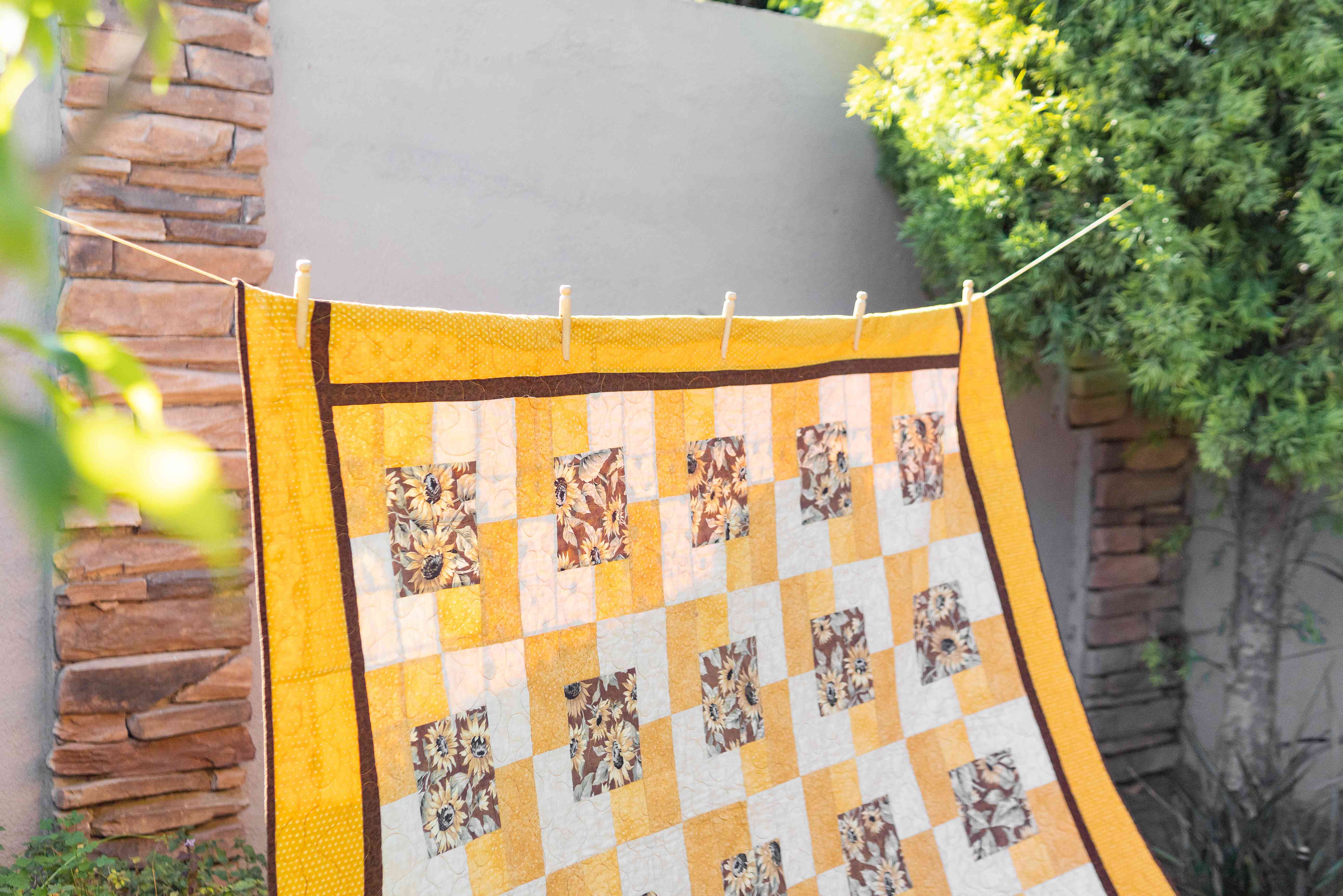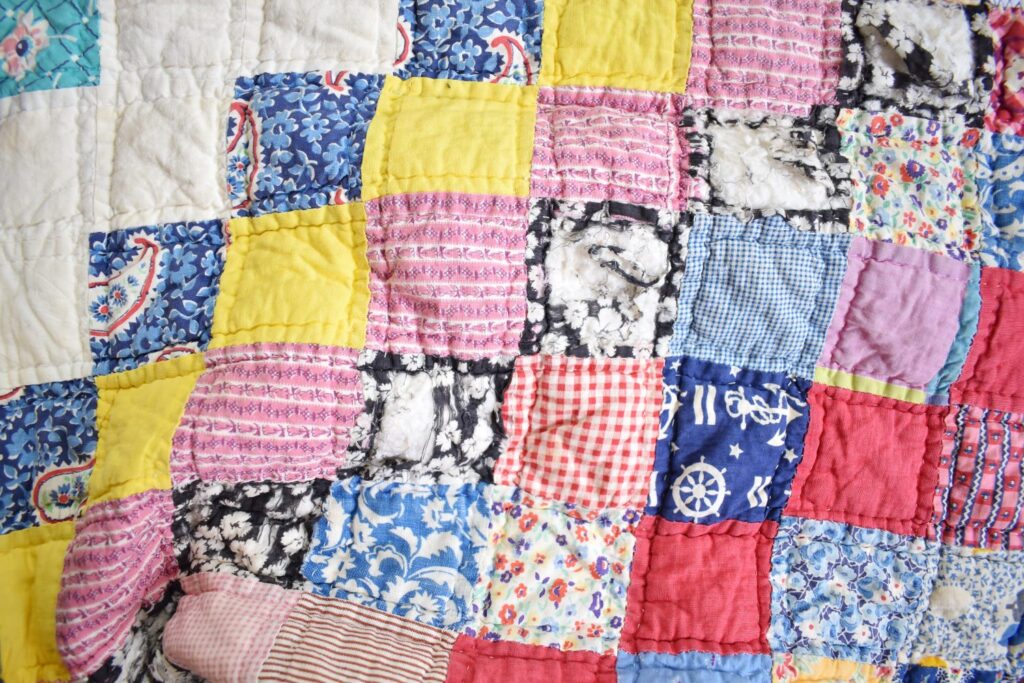If you have a precious old quilt, you may be wondering how to properly clean and maintain it. This article will provide you with some tips on how to wash old quilts so that you can keep them looking great for years to come. We’ll cover the best ways to clean and care for your quilts so that you can enjoy them for many years to come.
How to Wash Old Quilts

Cleaning Stained Quilts
To clean a stained quilt, spot-treat with a mild detergent and cold water, then rinse with a damp cloth. If the stain persists, use a small amount of bleach to remove it. Always test the bleach in an inconspicuous area first. Once the stain has been removed, rinse again with cold water and let the quilt air dry.
Cleaning Old Dirty Quilts
For an old quilt that is very dirty, try soaking it in a mild detergent and cold water for 30 minutes. After soaking, rinse the quilt in cold water, then hang it to dry. If the quilt is still stained, spot-treat it with a mild detergent and cold water, then rinse with a damp cloth.
Cleaning Vintage Quilt Toppers with Spots
Vintage quilt toppers can be tricky to clean. For spots, use a mild detergent and cold water to spot-treat the affected area. If the spot persists, use a small amount of bleach. Always test the bleach in an inconspicuous area first. Once the spot is removed, rinse again with cold water and hang the quilt to dry.
What is the Best Way to Clean Old Stained Quilts
Cleaning Dingy Quilt Fabric
When it comes to cleaning dingy quilt fabric, the best way to go is to use a mild detergent and cold water. Place the quilt in a large tub or sink filled with cold water and add a few drops of mild detergent. Gently swish the quilt around in the water until it is thoroughly saturated. Let it soak for a few hours and then rinse. Lay the quilt flat and allow it to air dry.
Cleaning a 100 Year Old Quilt
When it comes to cleaning a 100 year old quilt, the safest way to go is to take it to a professional cleaner. A professional cleaner will be able to assess the quilt and determine the best way to clean it without damaging it. They will also be able to suggest ways to make it last for years to come.
Caring for a 50 Year Old Quilt
To care for a 50 year old quilt, it is best to never wash it in a washing machine or dry it in a dryer. Hand washing is the best option. Use a mild detergent and cold water and allow the quilt to soak for a few hours. Rinse it gently and lay it flat to air dry. It is also important to never use bleach or harsh chemicals when cleaning an old quilt.
When it comes to how to clean old dirty quilt that can’t be washed, it is best to take it to a professional cleaner. They will be able to assess the quilt and determine the best way to clean it without damaging it.
Frequently Asked Questions
What Materials Should be Used to Clean an Old Quilt?
- Mild Detergent: A mild detergent without fragrances, dyes, or harsh chemicals should be used. This will prevent any damage to the quilt fabric.
- Cold Water: Cold water should be used in order to preserve the integrity of the quilt’s fabric.
- Gentle Cycle: If the quilt is machine washable, it should be washed on a gentle cycle.
- Dryer Balls: Dryer balls can be used to reduce the amount of time the quilt spends in the dryer, as well as reduce wrinkles.
- Delicate Cycle: If the quilt is machine-washable, it should be dried on a delicate cycle.
- Hanger: If hand washing, the quilt should be hung on a hanger to air dry.
How often should a quilt be cleaned?
General Cleaning:
- Quilts should be vacuumed or shaken out at least once a year.
- If you use a quilt regularly, it should be vacuumed or washed more often.
- If you notice any spots or stains, it should be washed immediately.
Deep Cleaning:
- Quilts should be washed or dry cleaned every two to three years.
- If the quilt is used more frequently, it should be washed or dry cleaned more often.
- If the quilt is not used often, it should still be washed or dry cleaned every five years.
How can I tell if a quilt is too delicate to be machine washed?
To determine if a quilt is too delicate to be machine washed, check the care label. If it reads ‘dry clean only’, then it is likely too delicate for machine washing. Check for signs of fraying or weak spots in the fabric, which could indicate a fragile quilt. Also, look for any signs of fading or discoloration, as this could be an indication that the fabric is too delicate to be washed in a machine. If in doubt, consider having the quilt professionally cleaned.
Is it Safe to Use a Dry Cleaner to Clean an Old Quilt?
Using a dry cleaner to clean an old quilt may be an option, however it is not recommended. Dry cleaning a quilt can damage delicate fabrics and may shrink the quilt. If you decide to take a quilt to a dry cleaner, make sure to use a reputable cleaner who is experienced in cleaning delicate fabrics. Be sure to discuss the cleaning method before the quilt is taken away.
How Can I Preserve a Quilt for Future Generations?
- Keep it Clean: Regularly vacuum the quilt to remove dust and dirt. When washing, use a mild detergent and cold water. Hang the quilt to air dry, as opposed to putting it in the dryer.
- Protect from Sunlight: If the quilt will be used, avoid exposing it to sunlight for extended periods of time and place it away from direct sunlight when not in use.
- Protect from Pests: Store the quilt in a cool, dry place, such as in a cedar chest or a vacuum sealed bag. Clean the space before storing the quilt to ensure there are no pests.
- Preserve the Color: If the quilt is to be displayed, occasionally dust it or lightly brush it with a soft brush. Use a professional cleaner to clean the quilt if necessary.
- Documentation: Record the history and condition of the quilt in writing, including any repair and restoration work that was done. Store the documentation with the quilt.
Conclusion
Proper cleaning and maintenance of quilts is essential for preserving their beauty and longevity. Taking the time to identify the fabric, use appropriate cleaning products, and store quilts properly will ensure that these precious heirlooms will remain in great condition for many years to come.






